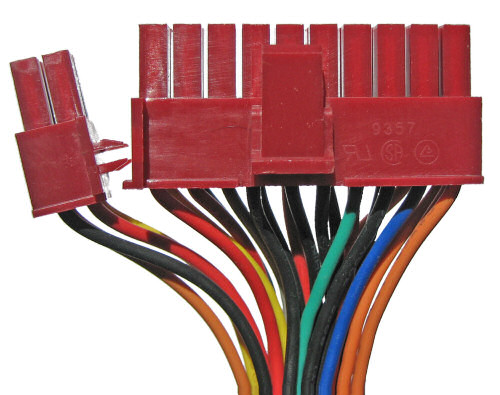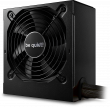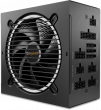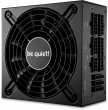6-way Intelligent Mains Panel Discontinued | |
| More variations available Show | |
OneClick 6-way Intelligent Mains Panel
How many peripherals do you have plugged in to the mains apart from your PC? Monitor, speakers, printer, scanner, desk light, backup drive, PDA cradle, USB hub, water cooler? Wouldn’t it be convenient to be able to switch them all on and off at once? Think of the savings in electricity and wear-and-tear, not to mention the bliss of the complete silence that you’ll notice when all their transformers stop buzzing!
To use the OneClick 6-way Intelligent Mains Panel, plug your PC into its black socket, and up to five other items into the remaining outlets. When you switch your PC on, the device will detect the change in power being drawn by the PC and automatically switch on all the other items within three seconds. And when you turn your PC off, it turns all the other items off too! Clever eh?
If you have more than five items you want to switch on and off automatically, you can plug an ordinary multi-way mains extension block into one of the grey OneClick sockets. The OneClick is capable of switching any number of devices, up to a maximum total loading of 13 amps at 250V (3.25kW). It even gives built-in surge protection for all its sockets and is compatible with uninterruptible power supplies (just plug the OneClick into the UPS output).
If you use your PC for eight hours a day, the OneClick will pay for itself in just one year through electricity savings alone, and if you use it for 15 years, you’ll save around 500 at today’s electricity prices! If you use your computer for under eight hours a day (in other words, it is switched off for more than 16 hours) you will save even more!
So the OneClick makes it easy to turn everything on and off using “one click” and will also make your peripherals last longer because they won’t wear out by being on standby all the time. It minimises fire risk by switching off items while you’re away. Think of the money you’ll save and the benefit to the environment. And as if that wasn’t enough, the OneClick even has a phone/modem splitter built into it!
One other excellent use for this product is as an automatic way of switching Zalman’s famous Reserator on and off. When using the OneClick with a Reserator, you no longer need to remember to turn the Reserator on and off when you use your PC.
PLEASE NOTE: The OneClick Intelligent Mains Panel is designed only for use within the UK and Ireland, and is not suitable for use with laptops. All OneClicks supplied by Quiet PC are the new model which has Enhanced Automatic Calibration™.
Features
- Turns on/off up to five items automatically
- Could pay for itself in 12 months
- Ideal auto-power switch for the Zalman Reserator
Reviews
PC Zone Magazine (90%)
It’s such a monumentally good idea every home should have one.
Micro Mart (9/10)
I don’t like to unreservedly endorse a product, but this one does what it promises…
PC Retail magazine
It’s rare that such a well-executed product is available which carries an ideal up-sell price-tag and which the benefits are so easily explained to the consumer.
Product Resources
FAQ
Do high wattage power supplies cost more to run?
No - the rated wattage of a power supply refers to the maximum amount of power it can deliver at full load, not how much power it uses. More powerful PSUs will consume around the same amount of power as lower powered power supplies in any given PC system, so your electricity bill will not be higher when using a more powerful power supply!
The best way to reduce your electricity bill when using your PC is to use a more efficient power supply or make your PC consume less power by removing components which are not needed, such as extra drives and expansion cards, or by choosing a cooler-running processor or graphics card.
My brand new power supply doesn’t work! Am I doing something wrong?
It’s possible that the power supply may be faulty, but here are some simple things to check. Firstly, a power supply will not work if you simply plug it in and flick the switch. The power supply will only turn on if you connect it to a working motherboard and associated items (processor, memory, video card, etc). It is actually the motherboard which tells the power supply when to switch on.
Secondly (if applicable), check the voltage is set correctly to 115/230 volts depending on what country you are in. Thirdly, if possible it would be good to try the power supply in another PC to see if it works, or try another power supply in your PC to see if that works. You can then tell whether it is the power supply which is faulty or the actual PC itself. If all else fails, please contact us for further support, and/or return details.
Why should I buy a whole new PSU when I could just replace the noisy fan in my existing one?
Virtually all the noise generated by a PC power supply originates from the cooling fan inside it, so simply replacing the fan with a quiet fan may seem an obvious way to go. However, if you are thinking about attempting this operation, please bear the following points in mind:
- Your existing power supply will be designed to run with a specific amount of airflow in order to adequately cool the components inside and reducing the airflow may lead to overheating and damage to the power supply and/or PC.
- All PC power supplies contain very high voltages and even with the power disconnected, the voltages stored in the capacitors can be easily enough to kill. It is not recommended to take the cover off any PC power supply for this reason unless you are absolutely confident of your own ability. Because of the grave dangers involved, all PC power supplies by law carry a warning label forbidding removal of the power supply case.
- There will be no standard PC fan connector inside the power supply to use to connect a replacement fan, and it would probably have to be soldered directly into the PCB inside the power supply, or have a specialist power connector attached. This can be a tricky operation to say the least.
Please consider the above points very carefully before proceeding with an operation to replace the fan in your existing power supply!
What is PFC (Power Factor Correction)?
If you are interested in being “green” and saving the planet, you might like to read a short explanation of how our power supplies can save energy using Active PFC (Power Factor Correction), not to be confused with Power Conversion Efficiency which is also very good in most of our PSUs. “Power Factor” is a measure of how efficiently electrical power is consumed. Ideally, Power Factor would be 1 (or 100%) and known as unity.
Unfortunately in the real world, Power Factor is reduced by highly inductive loads down to values of 0.7 (70%) or less. This induction is caused by equipment such as small electric motors, fans, fluorescent lighting ballasts and transformers such as those in PSUs. This is bad news for the electricity generating companies who can impose a surcharge on heavy users if they have a consistently low Power Factor, as more electricity has to be produced to make up the shortfall.
Power Factor Correction (PFC) is used in some equipment to minimise the inductive component of the electrical current. This helps to reduce the losses in the electrical supply to that equipment. Power Factor Correction capacitors are normally used to reduce induction in an electrical load, which minimises wasted energy and hence improves the efficiency of a company and reduces electricity costs.
It is not usually practical to reach unity, i.e. Power Factor 1, and it seems that most electricity supply companies accept consumers having a Power Factor as low as 0.94 (94%) without imposing a surcharge. Unfortunately most of the cheap (and not so cheerful) PSUs tend to have a Passive PF as low as 0.75 or 75% which in a large office can lead to a PF surcharge.
However, the good news is that most of Quiet PC’s PSUs implement a system known as Active PFC which involves some clever electronics. This means that their power factor (PF) can be as high as 0.94 or 94% (at full load), while harmful harmonic frequencies are reduced to well below legal requirements. So by using our products, you can be happy in the knowledge that you are doing your bit to save the planet!
How do I know what size of wattage power supply I need?
The best answer we can give to this question is to go ahead and take an intelligent “guesstimate”! There are no hard and fast rules about what size of power supply any given PC needs as a minimum. Our advice would be that if you are replacing an existing power supply, then consider a new one at least of the same wattage as the old one. In addition, if you wish to build in a “safety margin” to allow for reliable running and possible future upgrades, consider adding 100-200 watts to the rating of your existing unit.
If you are building a new PC, most customers now buy a power supply rated in the region of 500-800 watts depending primarily on the performance level of their graphics card(s) and number of drives to be installed. But in any event if you are unsure about which power supply would be best for your PC then please do contact us by phone or email and we will be happy to give you a specific recommendation based on your budget.
My new PSU came with a 24-pin connector but my motherboard needs 20 pins! Do I need an adaptor cable?
We receive many customer enquiries about this. In fact, most of the 24-pin compatible power supplies we sell come with special motherboard connectors which can be converted to 20-pins with no additional conversion cables. All you need to do is look carefully at the connector and you will see that the end four pins can be slid off, turning the connector into a 20-pin compatible one (see below) - easy when you know how!

Image showing how to change a power supply’s 24-pin motherboard connector into a 20-pin connector by unclipping the end four-pin blockWhat do the PSU safety protection abbreviations mean?
There are many possible safety protections a PSU can have. Below is a list of what each abbreviation means. Please note, not all PSUs have all safety protections.
- OCP - Over-Current Protection
- OVP - Over Voltage Protection
- UVP - Under Voltage Protection
- SCP - Short Circuit Protection
- OPP - Over Power Protection
- OTP - Over Temperature Protection
- UL - Underwriters Laboratories, more information.
- TÜV - Technical Inspection Association, more information.
- CE - European Conformity, more information.
- FCC - Federal Communications Commission, more information.
- RoHS - Restriction of Hazardous Substances Directive, more information.
- WEE - Electronic waste, more information.
- 80 PLUS - Promotes energy efficiency for PC power supplies, more information.
- ErP - Energy Related Products, more information.
More information on certification marks can be found here.
Top Quiet Power Supplies

Seasonic PRIME Fanless 500W 80PLUS Platinum Modular Power Supply

Streacom ST-NANO160 160W nanoPSU and AC/DC adapter block

be quiet System Power 10 650W 80Plus Bronze PSU

Seasonic PRIME Fanless 700W 80PLUS Titanium Modular Power Supply

be quiet Pure Power 12 M 750W 80+ Gold Fully Modular ATX3.0 PSU

Streacom ST-ZF240 ZeroFlex 240W Passive PSU

ASUS PRIME 750W ATX3.0 Modular 80PLUS Gold PSU, OEM

be quiet 600W SFX-L Modular 80PLUS Gold PSU

Streacom ST-NANO120 120W nanoPSU and AC/DC adapter block

FSP Hydro Ti Pro 1000W 80PLUS Titanium Fully Modular ATX 3.0 PSU

